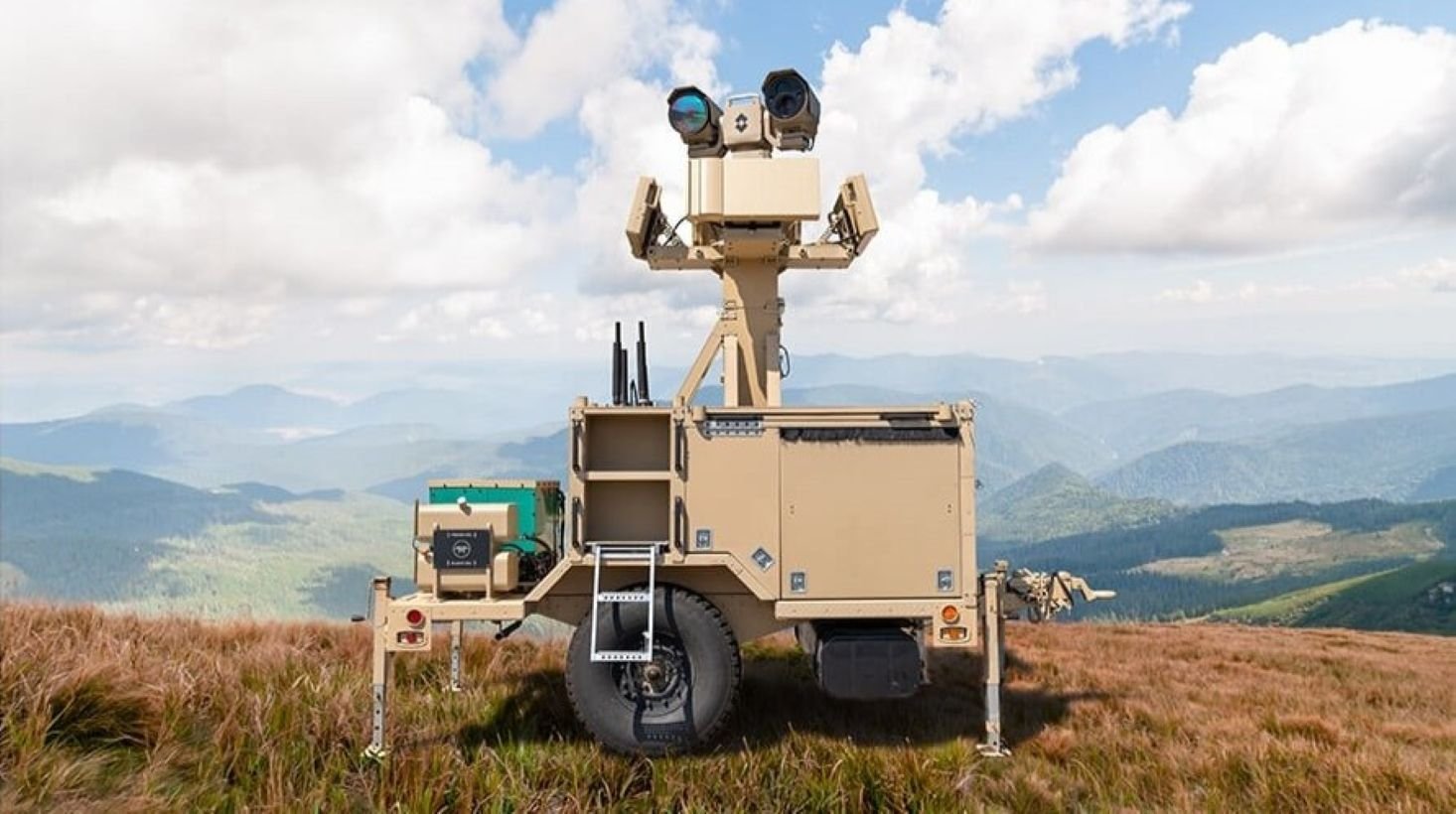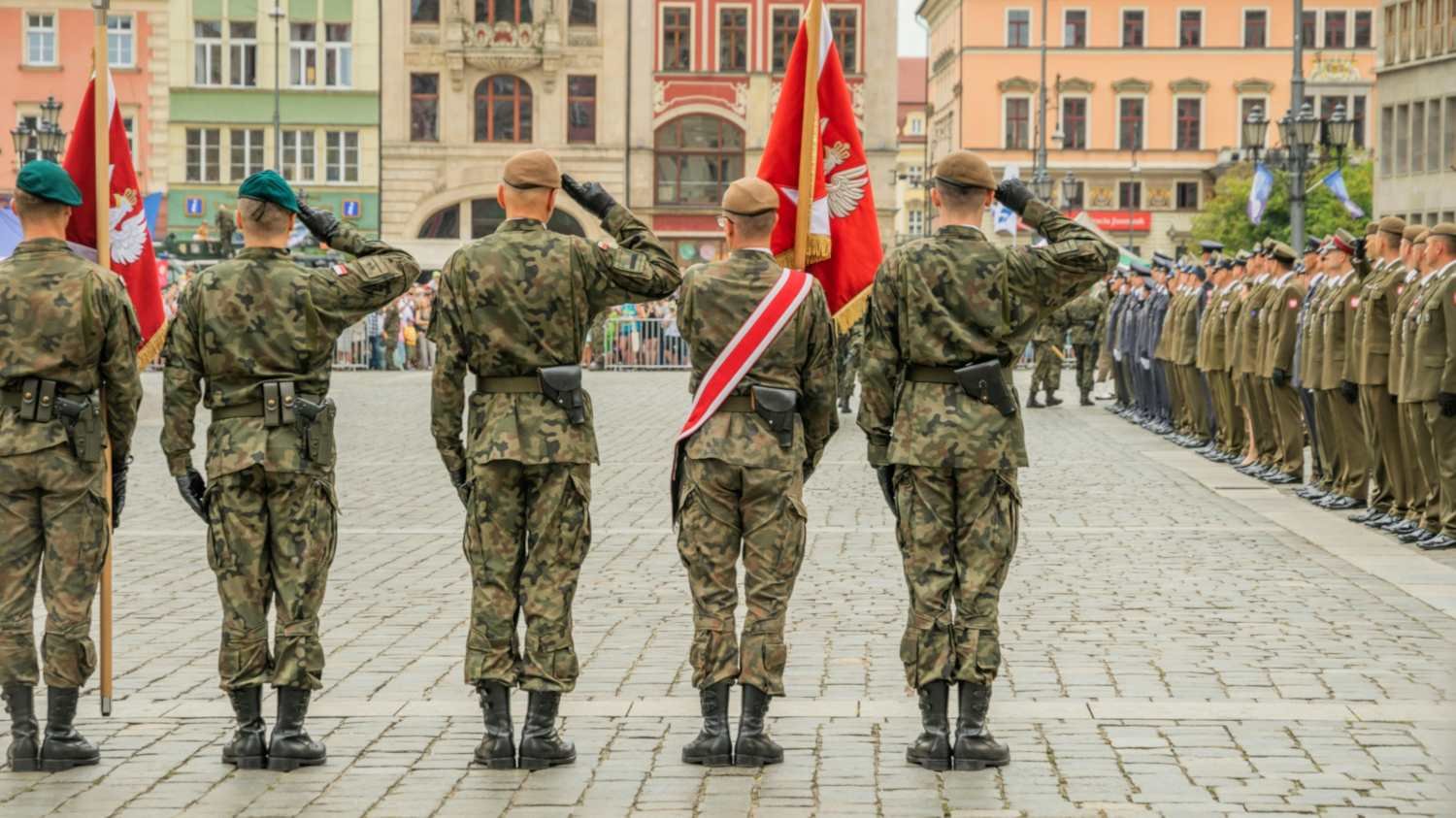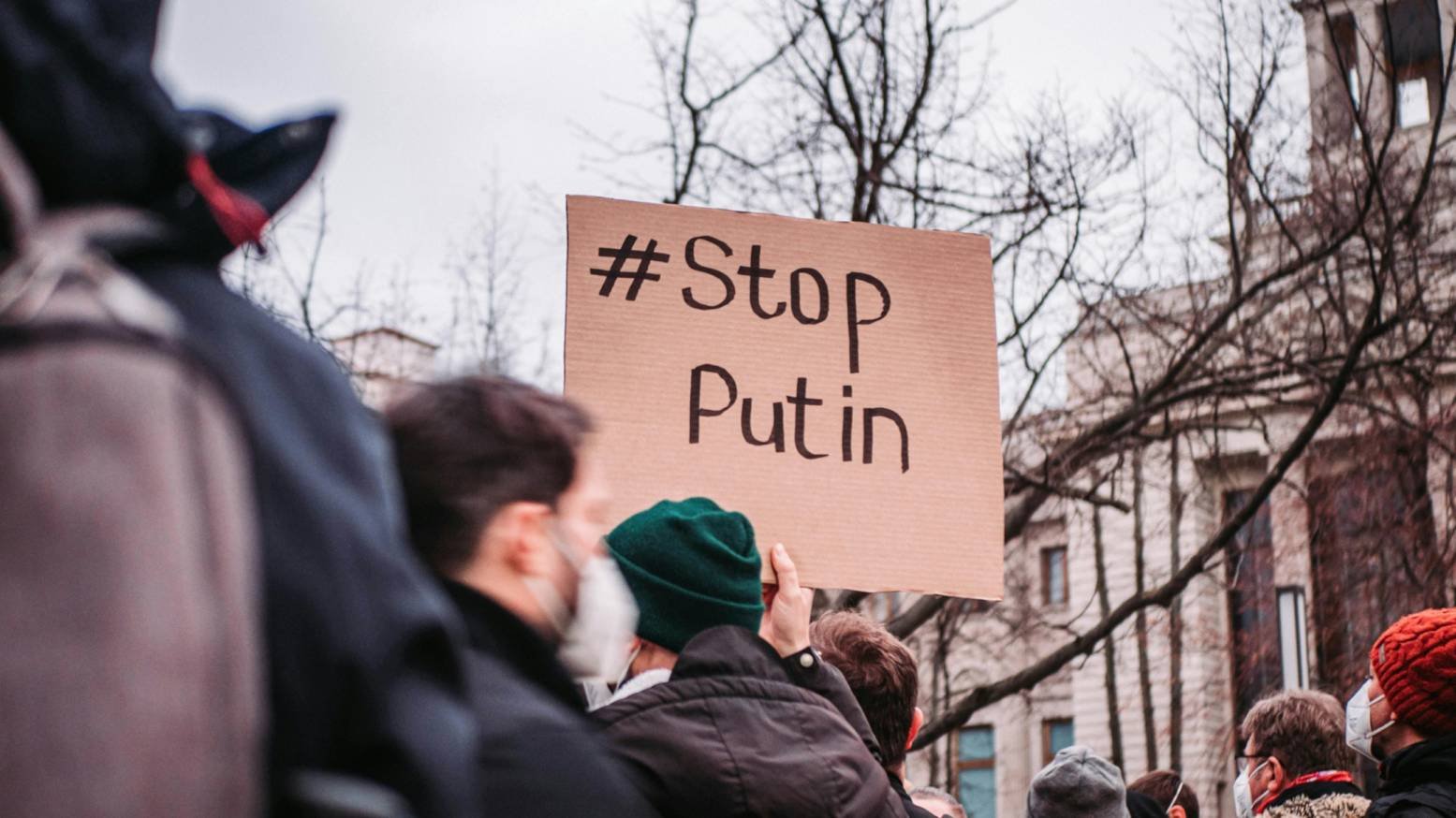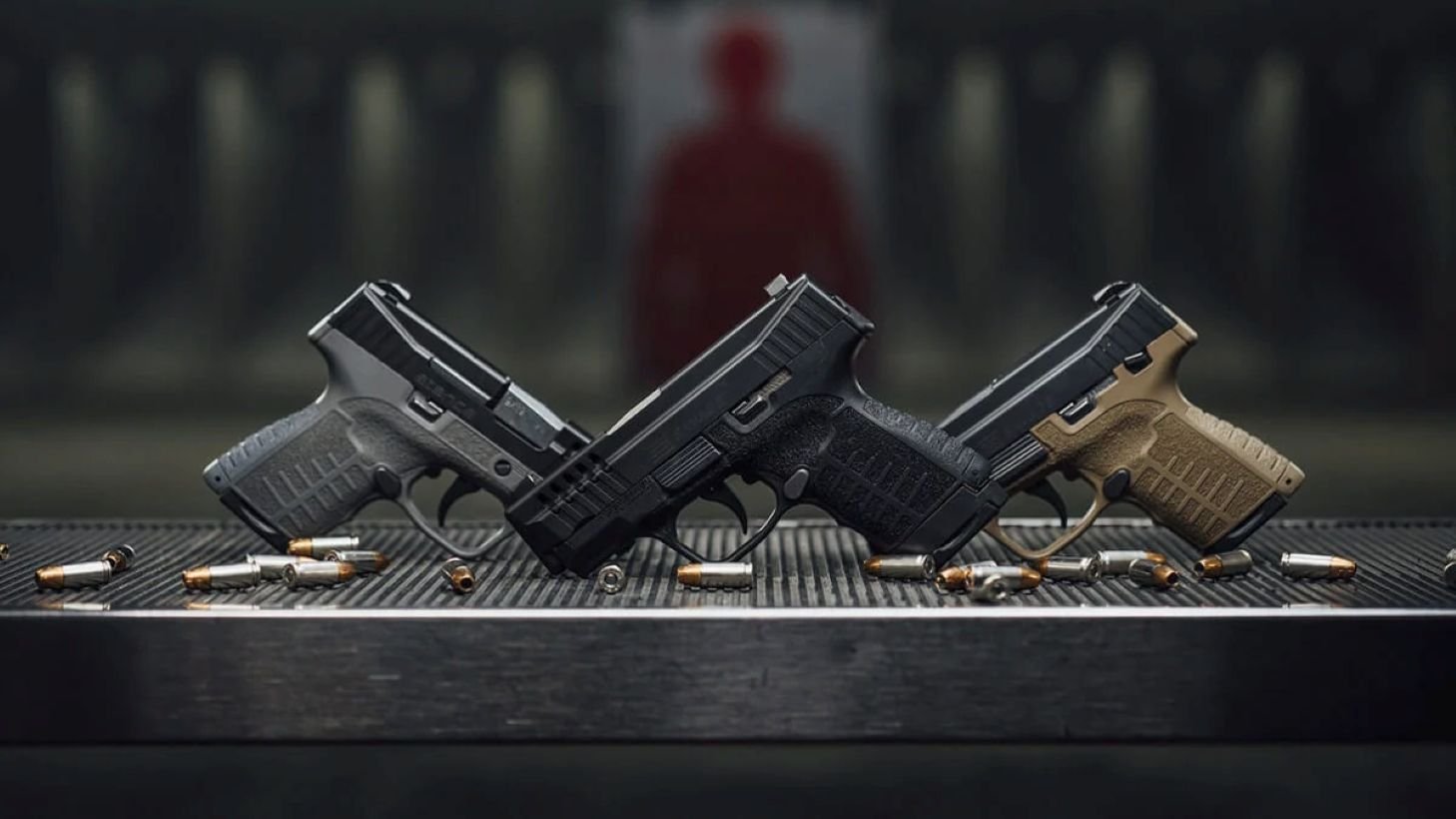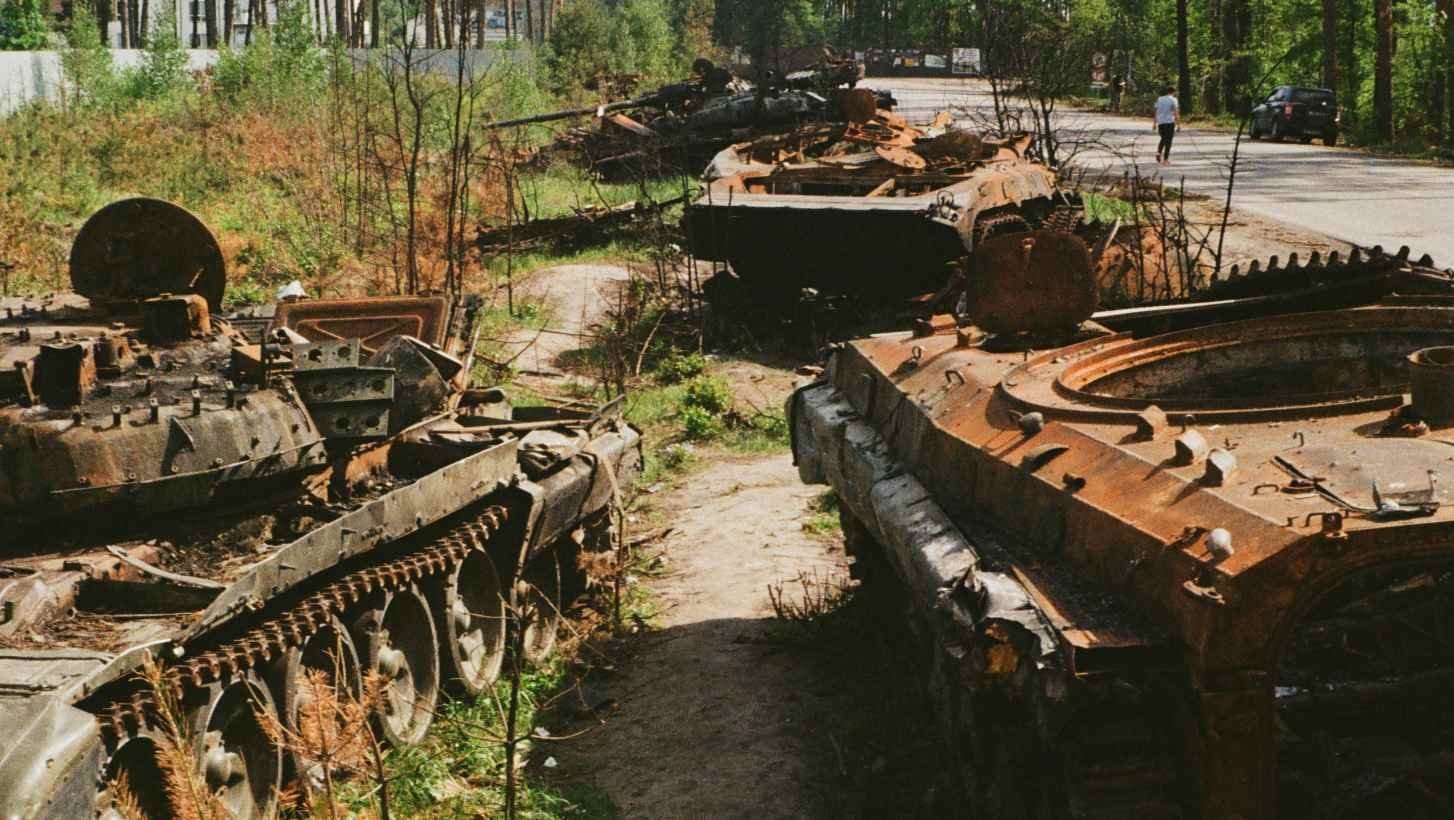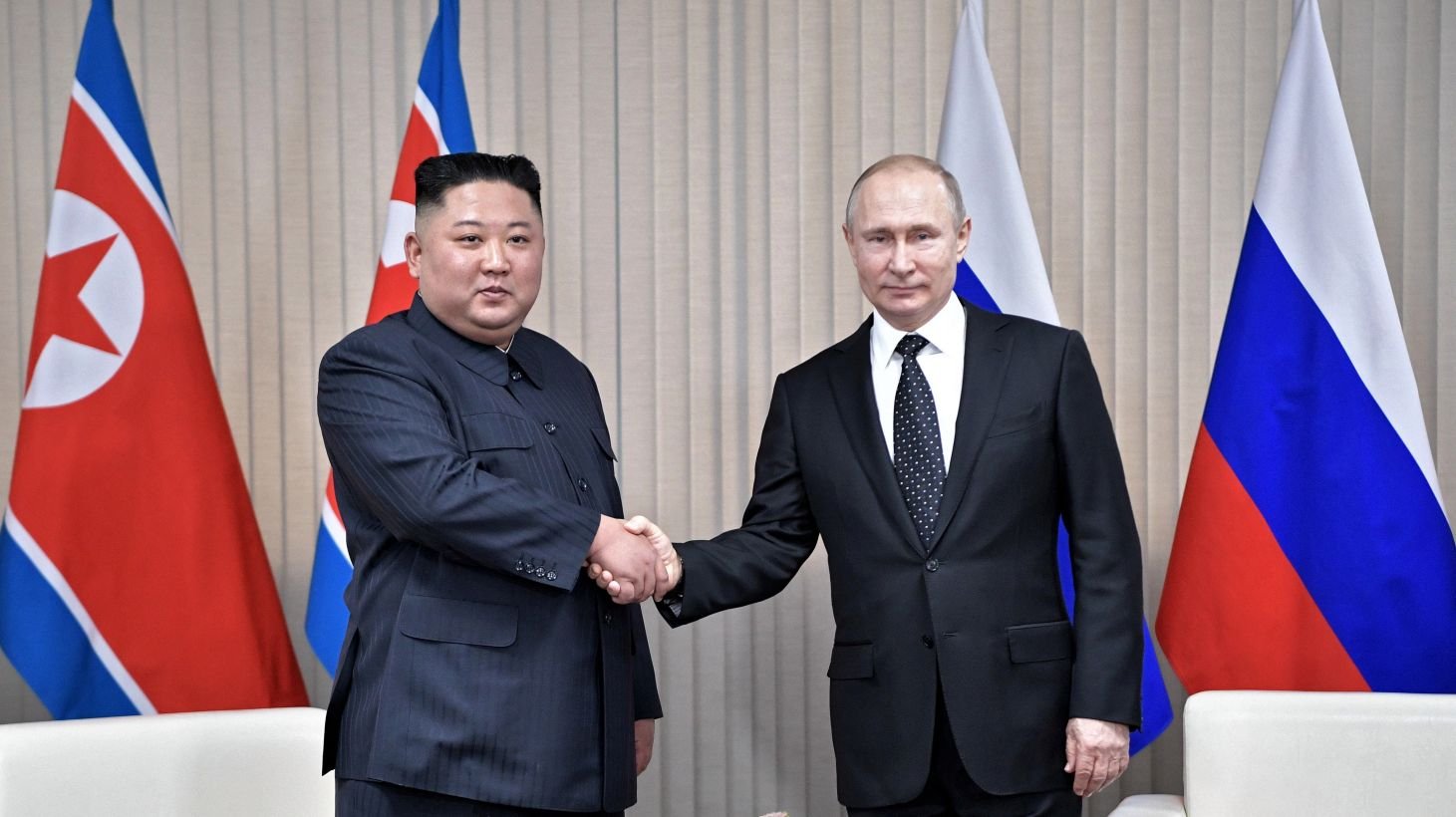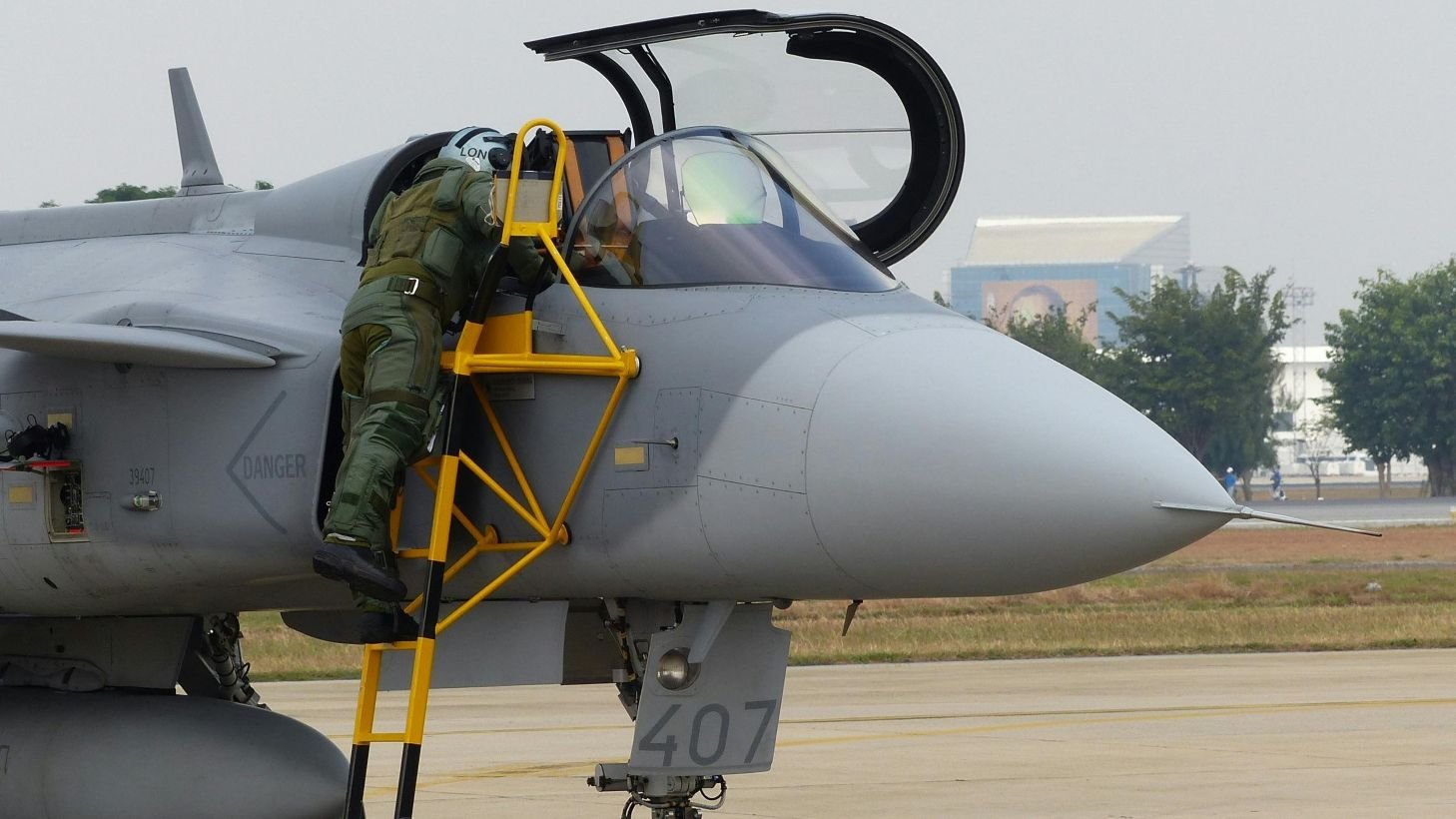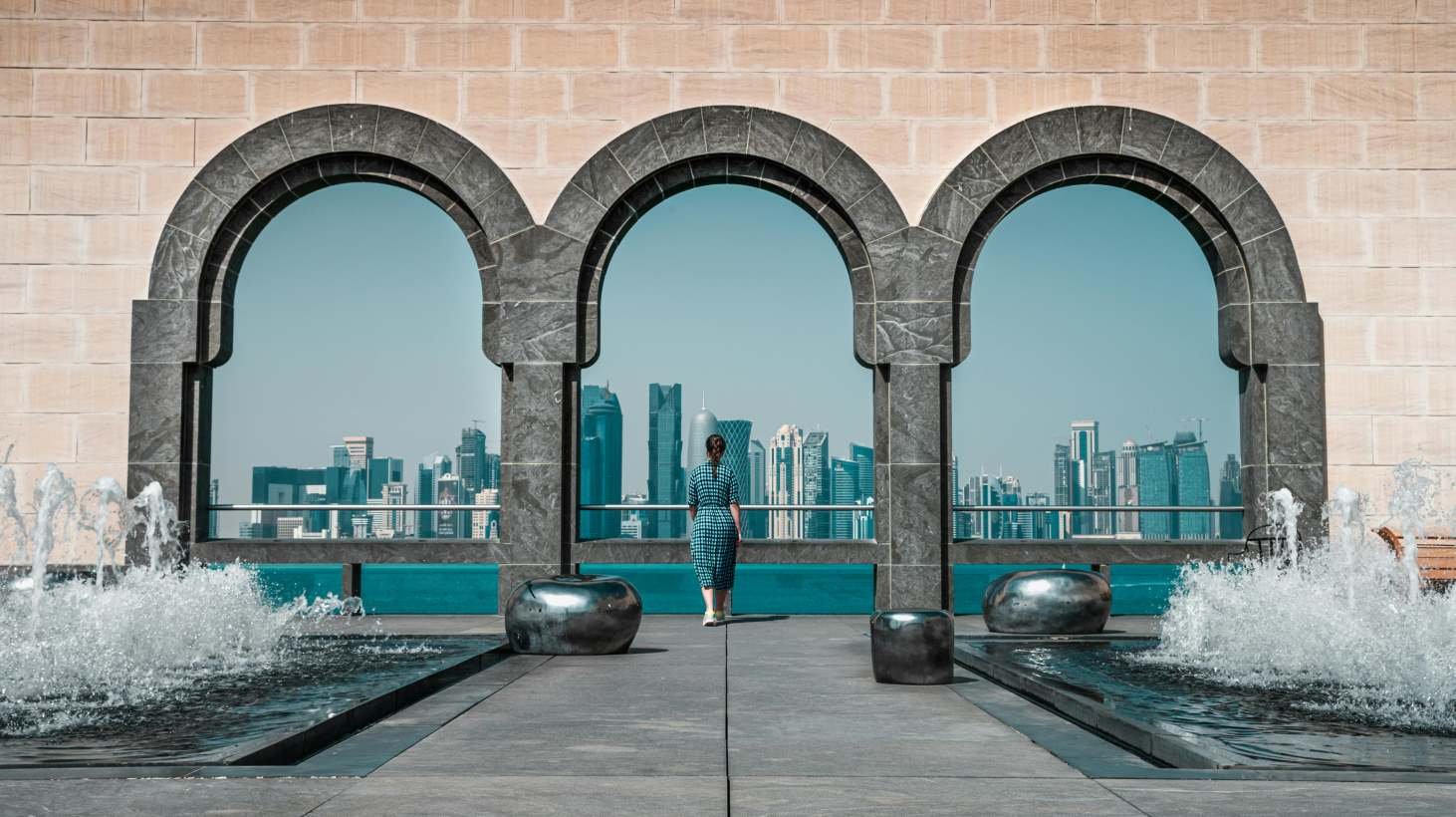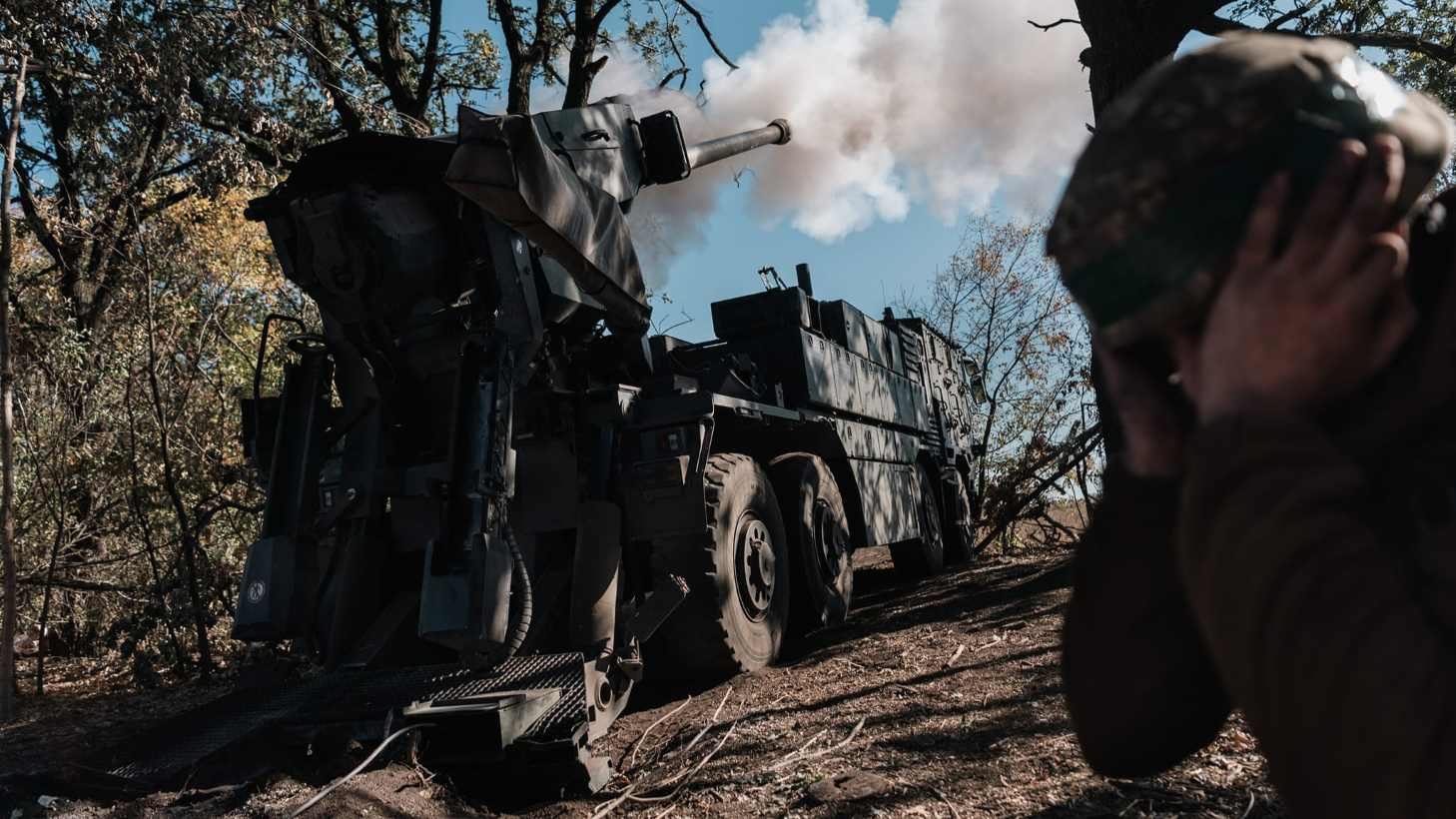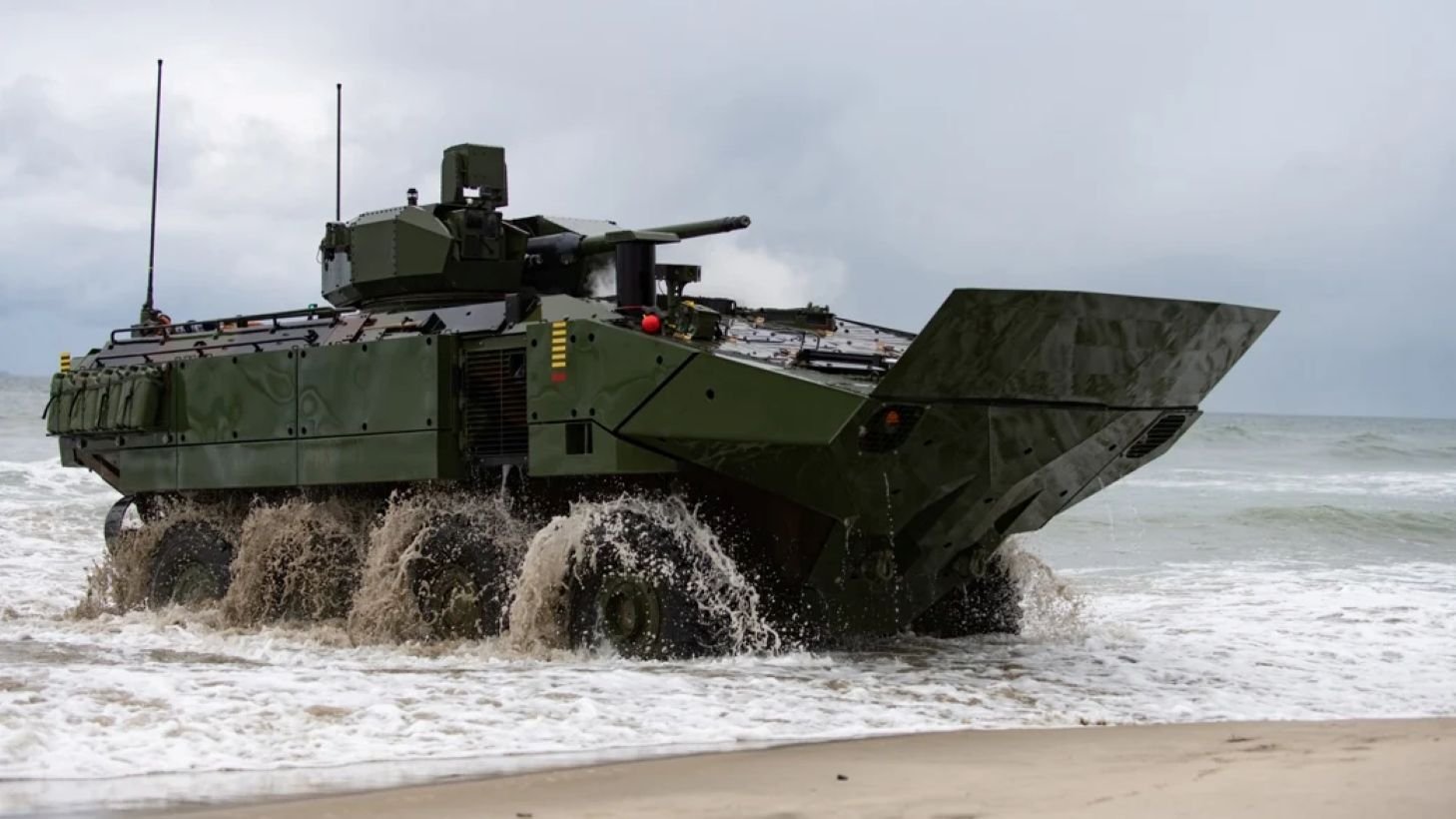-
Posts
790 -
Joined
-
Last visited
Content Type
Profiles
Uncrowned Armory News
Prepping Cookbook
Conspiracy Theories
Uncrowned Tactical Sports News
Prepping
Forums
Events
Everything posted by Uncrowned Guard
-
US Military Tests Groundbreaking Anti-Drone System The US military has begun trialing the Teledyne Cerberus XL, an innovative anti-drone (counter-UAS) device capable of concurrently detecting as many as 500 targets. The high-tech system not only significantly enhances the military's drone detection capabilities but also proves valuable amid escalating unmanned aerial vehicle (UAV) threats globally. The Power of the Cerberus XL C-UAS Earlier this year, the cutting-edge Cerberus XL C-UAS made its debut in a US-led military exercise, showcasing its adeptness in long-range sensing and counter-UAS action. The advanced gadget combines next-gen thermal and visual imaging, 3D radars, and radio frequency (RF) detection to speedily locate and track drones. In addition, it employs non-kinetic effectors to nullify threats from as far as two miles away. The Cerberus XL C-UAS not only thrives in strenuous conditions but is also modular, meaning it can adapt to air, ground, and maritime threats. This makes it indispensable for multi-domain situational awareness in areas including military bases, airports, seaports, and critical infrastructures, as articulated by Teledyne FLIR, the US tech company behind the new system. Designed to address the entire counter-drone kill chain - detect, track, identify, and defeat - the Cerberus XL C-UAS is primed for easy integration with kinetic defeat solutions, moreover, its sensor systems harness artificial intelligence (AI) to sharpen target identification precision. Recognition and Prospects for the Cerberus XL C-UAS In 2021, Teledyne FLIR Defense secured a $31 million contract with Kongsberg Defence & Aerospace to supply the Cerberus XL C-UAS as an integral part of a counter-drone solution for Ukrainian forces. Notably, the system has since demonstrated its prowess in operations. A study by Mordor Intelligence predicts that the military UAV market will rise annually by an average of 11.7% from 2024 through 2029, a testament to the escalating demand for cutting-edge technologies such as counter-UAS systems, which tackle the ever-evolving drone threats. Teledyne FLIR Defense president, Dr. JihFen Lei, attributes the system’s success to its marriage of innovative surveillance and radar technologies, saying customers can transition from zero counter-UAS capability to a full solution with this rapid-setup platform. Falcon Peak Initiative Showcases Cerberus XL C-UAS Recently, the Cerberus XL C-UAS was demonstrated during a static display at Fort Carson, Colorado, marking its inclusion in the Falcon Peak initiative. Spearheaded by the US Department of Defense, this initiative aims to evaluate potential solutions for detecting, tracking, and neutralizing small unmanned aerial system (sUAS) incursions on US military bases. Various systems purposed for neutralizing or disrupting unauthorized drone operations underwent testing during the two-week event, with a particular emphasis on the ability to track, identify, and neutralize drones under diverse conditions and scenarios. The Teledyne Cerberus XL C-UAS's involvement in the Falcon Peak exercise is seen as integral in advancing the Department of Defense’s capability to address the transformative security threats posed by sUAS, offering crucial insights for conceiving future strategies and bolstering the safeguarding of US military bases from drone-related dangers.
-
- anti-drone technology
- counter-uas systems
- (and 3 more)
-
US Opens New Missile Defense Base in Poland Amidst Mixed Reactions On November 13, the United States unveiled a fresh air defense base in Redzikowo, northern Poland. As per Polish President, Andrzej Duda, this establishment highlights the assured defense of NATO's eastern territories. Russia's Stance on the New Base The strategically located base, in close proximity to the Baltic coast, extends NATO's missile defense shield across Europe. However, Russia criticized this development, terming it as a tactical demeanor to counter Russian military might. Historical Development of the Base and It's Significance The construction of the base traces back to the early years of the 21st century. It plays a critical role in NATO’s "Aegis Ashore" missile shield, which aims to safeguard Europe against any possible missile attacks. Inclusive of the shield are two sites in Poland and Romania, U.S. Navy destroyers in Rota, Spain, supplemented by an early-warning radar in Kurecik, Turkey. Jens Stoltenberg, the former NATO Secretary General, emphasized the indispensable presence of missile defense as "ballistic missiles have been extensively employed in conflicts in Ukraine and the Middle East.” He communicated via a press release in July 10 saying,"As a defensive Alliance, we cannot ignore that threat. Missile defense is an essential element for NATO’s core task of collective defense." During the inauguration of the base, President Duda echoed that the U.S's tangible presence in Poland is pivotal to the security of Poland and NATO's eastern flank, according to Polskie Radio 24. Poland's 'East Shield' Program This recently operational base is in consonance with Poland’s defense strategy embodied in its “East Shield” program. The program seeks to bolster defenses along Poland's borders with Belarus and the Russian enclave of Kaliningrad. Launched in May, the program encapsulates physical barriers, upgraded surveillance systems and infrastructure, featuring recent fortifications along the Kaliningrad border initiated on November 1. The Politically Charged Reception of the Base Reception to the opening of the base did trigger diverging opinions, given concerns among NATO allies over the U.S's commitment to collective security. Especially after the ascendancy of Donald Trump, who implied that the U.S. wouldn't defend NATO members negligent of ample defense spending. However, Polish leaders hold a more optimistic viewpoint, as told by Polish Gazeta Wyborcza's Mateusz Mazzini to Monocle. They hold a tenacious belief in the mutual benefits of Trump's presidency. Admiral Stuart B. Munsch, Commander of the United States Naval Forces Europe-Africa, celebrated the collaboration between the U.S. and Poland. In his statement to Polsat News, “The Polish and American nations stand shoulder to shoulder in the vanguard of defense against past Soviet and contemporary Russian imperialism and aggression." On the other hand, Moscow found the base to symbolize "a direct challenge to its security" and a measure to restrain Russia’s potential militarily." Kremlin spokesperson Dmitry Peskov emphasized this point, hinting at an unspecified reciprocal response. View full article
-
- nato
- missile defense
- (and 3 more)
-
US Opens New Missile Defense Base in Poland Amidst Mixed Reactions On November 13, the United States unveiled a fresh air defense base in Redzikowo, northern Poland. As per Polish President, Andrzej Duda, this establishment highlights the assured defense of NATO's eastern territories. Russia's Stance on the New Base The strategically located base, in close proximity to the Baltic coast, extends NATO's missile defense shield across Europe. However, Russia criticized this development, terming it as a tactical demeanor to counter Russian military might. Historical Development of the Base and It's Significance The construction of the base traces back to the early years of the 21st century. It plays a critical role in NATO’s "Aegis Ashore" missile shield, which aims to safeguard Europe against any possible missile attacks. Inclusive of the shield are two sites in Poland and Romania, U.S. Navy destroyers in Rota, Spain, supplemented by an early-warning radar in Kurecik, Turkey. Jens Stoltenberg, the former NATO Secretary General, emphasized the indispensable presence of missile defense as "ballistic missiles have been extensively employed in conflicts in Ukraine and the Middle East.” He communicated via a press release in July 10 saying,"As a defensive Alliance, we cannot ignore that threat. Missile defense is an essential element for NATO’s core task of collective defense." During the inauguration of the base, President Duda echoed that the U.S's tangible presence in Poland is pivotal to the security of Poland and NATO's eastern flank, according to Polskie Radio 24. Poland's 'East Shield' Program This recently operational base is in consonance with Poland’s defense strategy embodied in its “East Shield” program. The program seeks to bolster defenses along Poland's borders with Belarus and the Russian enclave of Kaliningrad. Launched in May, the program encapsulates physical barriers, upgraded surveillance systems and infrastructure, featuring recent fortifications along the Kaliningrad border initiated on November 1. The Politically Charged Reception of the Base Reception to the opening of the base did trigger diverging opinions, given concerns among NATO allies over the U.S's commitment to collective security. Especially after the ascendancy of Donald Trump, who implied that the U.S. wouldn't defend NATO members negligent of ample defense spending. However, Polish leaders hold a more optimistic viewpoint, as told by Polish Gazeta Wyborcza's Mateusz Mazzini to Monocle. They hold a tenacious belief in the mutual benefits of Trump's presidency. Admiral Stuart B. Munsch, Commander of the United States Naval Forces Europe-Africa, celebrated the collaboration between the U.S. and Poland. In his statement to Polsat News, “The Polish and American nations stand shoulder to shoulder in the vanguard of defense against past Soviet and contemporary Russian imperialism and aggression." On the other hand, Moscow found the base to symbolize "a direct challenge to its security" and a measure to restrain Russia’s potential militarily." Kremlin spokesperson Dmitry Peskov emphasized this point, hinting at an unspecified reciprocal response.
-
- nato
- missile defense
- (and 3 more)
-
Democratic Senators Call for Investigation into Elon Musk's Alleged Contacts with Russia Leading Democratic senators Jeanne Shaheen and Jack Reed have urged both the Pentagon and U.S. law enforcement agencies to look into reports about Tesla and SpaceX CEO's Elon Musk's communicative encounters with Russian officials. The senators' call to action includes communications allegedly held with Russian President Vladimir Putin. Senators Express Their Concerns Over Musk's Involvement in Government Projects Jeanne Shaheen is a senior member of the Senate Foreign Relations Committee, while Jack Reed chairs the Senate Armed Services Committee. Both expressed their national security concerns in a joint letter to U.S. Attorney General Merrick Garland and the inspector general of the Pentagon. In the letter that Reuters saw on 15th November, both senators requested a review of Musk's participation in SpaceX projects for potential debarment and exclusion due to suspected contacts with Russia. Debarment would mean preventing Musk from participating in specific contracts and privileges, wreaking potential havoc in the space industry. In their letter, the senators quoted, "These relationships between a well-known U.S. adversary and Mr. Musk, a beneficiary of billions of dollars in U.S. government funding, pose serious questions regarding Mr. Musk’s reliability as a government contractor and a clearance holder." Musk's Communications with Russia Under Scrutiny Musk has had multiple interactions with Putin and Russian Deputy Chief of Staff Sergei Kiriyenko. Both senators showed serious concern over Musk's alleged contact with Kiriyenko, who has faced charges from the U.S. Justice Department related to an AI-propelled propaganda campaign advocating Russian interests before the recent U.S. presidential election. In 2022, a new revelation made headlines when Ian Bremmer, president of the Eurasia Group, stated that Musk had talked to Putin about the Ukraine war and the Kremlin's "red line" concerning nuclear weapon use. Musk, however, contradicted this claim, saying his discussions with Putin were about space-related issues 18 months prior. Impact on U.S. Government Contracts and National Security Musk manages SpaceX, a key player in the U.S. space sector, holding billions of dollars in U.S. government contracts with the Pentagon and NASA. It also has a $1.8-billion contract from the intelligence community to create a spy satellite network. Musk has asserted his U.S. security clearance, enabling him to access classified information. Shaheen and Reed highlighted in their letter that "Communications between Russian government officials and any individual with a security clearance have the potential to put our security at risk." This claim holds significant weight, especially in the backdrop of the escalating U.S.-Russia space rivalry since Russia's full-scale invasion of Ukraine in 2022. SpaceX, best known for its nearly 7,000-strong Starlink satellite network, plays a crucial role in U.S. military communications, which even includes battlefield communications of Ukraine’s armed forces. View full article
-
- elon musk
- russia relations
- (and 3 more)
-
Democratic Senators Call for Investigation into Elon Musk's Alleged Contacts with Russia Leading Democratic senators Jeanne Shaheen and Jack Reed have urged both the Pentagon and U.S. law enforcement agencies to look into reports about Tesla and SpaceX CEO's Elon Musk's communicative encounters with Russian officials. The senators' call to action includes communications allegedly held with Russian President Vladimir Putin. Senators Express Their Concerns Over Musk's Involvement in Government Projects Jeanne Shaheen is a senior member of the Senate Foreign Relations Committee, while Jack Reed chairs the Senate Armed Services Committee. Both expressed their national security concerns in a joint letter to U.S. Attorney General Merrick Garland and the inspector general of the Pentagon. In the letter that Reuters saw on 15th November, both senators requested a review of Musk's participation in SpaceX projects for potential debarment and exclusion due to suspected contacts with Russia. Debarment would mean preventing Musk from participating in specific contracts and privileges, wreaking potential havoc in the space industry. In their letter, the senators quoted, "These relationships between a well-known U.S. adversary and Mr. Musk, a beneficiary of billions of dollars in U.S. government funding, pose serious questions regarding Mr. Musk’s reliability as a government contractor and a clearance holder." Musk's Communications with Russia Under Scrutiny Musk has had multiple interactions with Putin and Russian Deputy Chief of Staff Sergei Kiriyenko. Both senators showed serious concern over Musk's alleged contact with Kiriyenko, who has faced charges from the U.S. Justice Department related to an AI-propelled propaganda campaign advocating Russian interests before the recent U.S. presidential election. In 2022, a new revelation made headlines when Ian Bremmer, president of the Eurasia Group, stated that Musk had talked to Putin about the Ukraine war and the Kremlin's "red line" concerning nuclear weapon use. Musk, however, contradicted this claim, saying his discussions with Putin were about space-related issues 18 months prior. Impact on U.S. Government Contracts and National Security Musk manages SpaceX, a key player in the U.S. space sector, holding billions of dollars in U.S. government contracts with the Pentagon and NASA. It also has a $1.8-billion contract from the intelligence community to create a spy satellite network. Musk has asserted his U.S. security clearance, enabling him to access classified information. Shaheen and Reed highlighted in their letter that "Communications between Russian government officials and any individual with a security clearance have the potential to put our security at risk." This claim holds significant weight, especially in the backdrop of the escalating U.S.-Russia space rivalry since Russia's full-scale invasion of Ukraine in 2022. SpaceX, best known for its nearly 7,000-strong Starlink satellite network, plays a crucial role in U.S. military communications, which even includes battlefield communications of Ukraine’s armed forces.
-
- elon musk
- russia relations
- (and 3 more)
-
Savage Unveils Striker-Fired Stance XR Micro 9mm Savage has unveiled their latest creation, the striker-fired Stance XR Micro 9mm. This new arrival to the handgun market showcases a contemporary design specifically engineered for superior performance, encapsulated in the convenience of a compact everyday carry pistol. Savage has refined the design of the micro pistol into a slender, easily concealable weapon, assuring users that the Stance XR Micro offers as much practical use as it does portability. Striking Features of the Stance XR Micro 9mm The Savage Stance XR Micro presents a variety of configurations to cater to diverse users’ preferences. These options include matte black nitride stainless steel slides complemented by front and rear serrations and a chamfered front for simple reholstering. Moreover, Savage’s Quick Release Optics (QRO) plate enhances the slide, making the attachment and detachment of optics swift and effortless. Potential users can choose from standard 3-dot iron sights, night sights, or opt for an optics-equipped model that includes a Crimson Trace CTS-1500 red dot straight out of the package. A Closer Look at the Details The Stance XR Micro boasts a polymer frame replete with a forward-facing Picatinny accessory rail, primed for installing lights and lasers. Added to this is an ambidextrous slide catch and magazine release, juxtaposed with a sturdy grip provided by aggressive surface textures. The wide-face trigger offers a short, sharp pull coupled with an equally brief reset. Users can customize the grip size to their preference with the inclusion of a pair of 18-degree interchangeable backstraps. Alongside it, Savage provides a 10-round flush fit magazine and a 13-round extended magazine. Customers can choose models with or without a manual safety feature. Aesthetic variations are also catered to with black, gray, and FDE frame color options available. The standard model of the Stance XR Micro 9mm, either with or without a manual safety, is priced at $469. However, models equipped with night sights are marked at $539, while the optics-equipped model is tagged at $659. Competition Abounds in the Micro-Compact Market The micro-compact market has been witnessing rising interest and influx of significant players in recent years. The introduction of Savage's Stance XR Micro 9mm, its diverse range of configurations, and competitive pricing pose the question of how it will fare against other offerings in this bustling market. Consumer feedback and in-depth reviews will testify to the product's performance and market acceptance in due course. View full article
-
- handgun market
- savage firearms
- (and 3 more)
-
Savage Unveils Striker-Fired Stance XR Micro 9mm Savage has unveiled their latest creation, the striker-fired Stance XR Micro 9mm. This new arrival to the handgun market showcases a contemporary design specifically engineered for superior performance, encapsulated in the convenience of a compact everyday carry pistol. Savage has refined the design of the micro pistol into a slender, easily concealable weapon, assuring users that the Stance XR Micro offers as much practical use as it does portability. Striking Features of the Stance XR Micro 9mm The Savage Stance XR Micro presents a variety of configurations to cater to diverse users’ preferences. These options include matte black nitride stainless steel slides complemented by front and rear serrations and a chamfered front for simple reholstering. Moreover, Savage’s Quick Release Optics (QRO) plate enhances the slide, making the attachment and detachment of optics swift and effortless. Potential users can choose from standard 3-dot iron sights, night sights, or opt for an optics-equipped model that includes a Crimson Trace CTS-1500 red dot straight out of the package. A Closer Look at the Details The Stance XR Micro boasts a polymer frame replete with a forward-facing Picatinny accessory rail, primed for installing lights and lasers. Added to this is an ambidextrous slide catch and magazine release, juxtaposed with a sturdy grip provided by aggressive surface textures. The wide-face trigger offers a short, sharp pull coupled with an equally brief reset. Users can customize the grip size to their preference with the inclusion of a pair of 18-degree interchangeable backstraps. Alongside it, Savage provides a 10-round flush fit magazine and a 13-round extended magazine. Customers can choose models with or without a manual safety feature. Aesthetic variations are also catered to with black, gray, and FDE frame color options available. The standard model of the Stance XR Micro 9mm, either with or without a manual safety, is priced at $469. However, models equipped with night sights are marked at $539, while the optics-equipped model is tagged at $659. Competition Abounds in the Micro-Compact Market The micro-compact market has been witnessing rising interest and influx of significant players in recent years. The introduction of Savage's Stance XR Micro 9mm, its diverse range of configurations, and competitive pricing pose the question of how it will fare against other offerings in this bustling market. Consumer feedback and in-depth reviews will testify to the product's performance and market acceptance in due course.
-
- handgun market
- savage firearms
- (and 3 more)
-
Almost One Million Shells Delivered to Ukraine, Reveals EU Diplomat According to recent reports in The Kyiv Independent, over the course of 2024, the European Union (EU) has dispatched 980,000 artillery shells to Ukraine. This is in relation to one million that were initially pledged, as disclosed on November 11 by Josep Borrell, the EU’s top diplomat. The Challenge of Fulfilling the Promise The delivery shortfall was elucidated by Borrell who stated that it occurred due to the unintended constrain of production capacity. Despite this setback, the total yield of EU-provided ammo to Ukraine is expected to surpass 1.5 million shells by the conclusion of the year. This projection takes into consideration both bilateral agreements with the EU and a separate initiative led by the Czech Republic. Czech-led Initiative Delivers Additional Support The Czech Republic, assisted by countries such as Canada, Germany, and the Netherlands, has struck a campaign aiming to deliver up to 800,000 shells. As of mid-2024, Czechia has already shipped out 50,000 units. This initiative was announced earlier in the year as a coordinated effort to purchase artillery shells for Ukraine, a response due to the deficiencies primarily precipitated by US aid delays. In addition to this, Ukraine and Czechia have agreed to an arrangement for the manufacturing of 155-mm and other large-caliber ammunition within Ukraine by the year 2025. Support Beyond Governmental Aid This initiative has also found supporters outside of governmental structures. Activists in Slovakia collected more than 4 million euros (equivalent to $4.3 million) for this cause after the Slovak government chose not to participate. Furthermore, Jana Cernochova, the Czech Defense Minister, declared in an interview with the Denik N newspaper in late July that Prague is preparing an additional announcement for a new initiative to purchase artillery ammunition for Ukraine in 2025. View full article
-
Almost One Million Shells Delivered to Ukraine, Reveals EU Diplomat According to recent reports in The Kyiv Independent, over the course of 2024, the European Union (EU) has dispatched 980,000 artillery shells to Ukraine. This is in relation to one million that were initially pledged, as disclosed on November 11 by Josep Borrell, the EU’s top diplomat. The Challenge of Fulfilling the Promise The delivery shortfall was elucidated by Borrell who stated that it occurred due to the unintended constrain of production capacity. Despite this setback, the total yield of EU-provided ammo to Ukraine is expected to surpass 1.5 million shells by the conclusion of the year. This projection takes into consideration both bilateral agreements with the EU and a separate initiative led by the Czech Republic. Czech-led Initiative Delivers Additional Support The Czech Republic, assisted by countries such as Canada, Germany, and the Netherlands, has struck a campaign aiming to deliver up to 800,000 shells. As of mid-2024, Czechia has already shipped out 50,000 units. This initiative was announced earlier in the year as a coordinated effort to purchase artillery shells for Ukraine, a response due to the deficiencies primarily precipitated by US aid delays. In addition to this, Ukraine and Czechia have agreed to an arrangement for the manufacturing of 155-mm and other large-caliber ammunition within Ukraine by the year 2025. Support Beyond Governmental Aid This initiative has also found supporters outside of governmental structures. Activists in Slovakia collected more than 4 million euros (equivalent to $4.3 million) for this cause after the Slovak government chose not to participate. Furthermore, Jana Cernochova, the Czech Defense Minister, declared in an interview with the Denik N newspaper in late July that Prague is preparing an additional announcement for a new initiative to purchase artillery ammunition for Ukraine in 2025.
-
North Korea Officially Enters Mutual Defense Treaty with Russia In a recent development, North Korea has announced the ratification of a defensive alliance with Russia, based on statements from official state media on November 12. This agreement obligates both countries to provide military aid to each other in the event of an armed attack. Rising Tensions and Mutual Goals The proclamation follows initial skirmishes between the Ukrainian forces and North Korean troops placed near Kursk, a border region of Russia. This comes after recent reports noted the first instances of conflict between Ukraine's military and North Korean soldiers stationed within the boundaries of Russia. Kim Jong Un's Decree This pact was confirmed by North Korea’s own KCNA news agency, stating that supreme leader Kim Jong Un had issued a decree ratifying the treaty. The news agency stated that “the treaty will take effect from the day when both sides exchanged the ratification instruments." Russia's Response and International Efforts Russian lawmakers gave a unanimous nod to this treaty the preceding week, following which President Vladimir Putin signed it into law. This agreement was first drawn up during Putin's visit to Pyongyang in June of this year, and it commands immediate military support from either party in the event of an attack. North Korean Foreign Minister, Choe Son Hui, during her latest trip to Moscow, declared her country's allegiance with Russia, insisting that Pyongyang will stand by Russia "until the day of victory." Accusations and Concerns Critics, including South Korea, Ukraine, and several Western nations, have accused North Korea of setting up approximately 10,000 troops to boost Russia's war efforts. Western governments have also claimed that Pyongyang has provided Moscow with artillery shells and missiles to be utilized in Ukraine. The G7 nations voiced their concerns last week over the escalating military collaboration between Russia and North Korea. They expressed fears that North Korean soldiers might receive training in the use of ballistic missiles, a move that would be in violation of UN Security Council resolutions. View full article
-
- north korea
- russia
- (and 3 more)
-
North Korea Officially Enters Mutual Defense Treaty with Russia In a recent development, North Korea has announced the ratification of a defensive alliance with Russia, based on statements from official state media on November 12. This agreement obligates both countries to provide military aid to each other in the event of an armed attack. Rising Tensions and Mutual Goals The proclamation follows initial skirmishes between the Ukrainian forces and North Korean troops placed near Kursk, a border region of Russia. This comes after recent reports noted the first instances of conflict between Ukraine's military and North Korean soldiers stationed within the boundaries of Russia. Kim Jong Un's Decree This pact was confirmed by North Korea’s own KCNA news agency, stating that supreme leader Kim Jong Un had issued a decree ratifying the treaty. The news agency stated that “the treaty will take effect from the day when both sides exchanged the ratification instruments." Russia's Response and International Efforts Russian lawmakers gave a unanimous nod to this treaty the preceding week, following which President Vladimir Putin signed it into law. This agreement was first drawn up during Putin's visit to Pyongyang in June of this year, and it commands immediate military support from either party in the event of an attack. North Korean Foreign Minister, Choe Son Hui, during her latest trip to Moscow, declared her country's allegiance with Russia, insisting that Pyongyang will stand by Russia "until the day of victory." Accusations and Concerns Critics, including South Korea, Ukraine, and several Western nations, have accused North Korea of setting up approximately 10,000 troops to boost Russia's war efforts. Western governments have also claimed that Pyongyang has provided Moscow with artillery shells and missiles to be utilized in Ukraine. The G7 nations voiced their concerns last week over the escalating military collaboration between Russia and North Korea. They expressed fears that North Korean soldiers might receive training in the use of ballistic missiles, a move that would be in violation of UN Security Council resolutions.
-
- north korea
- russia
- (and 3 more)
-
Report: Iran Develops Fentanyl-Based Chemical Weapons According to a recent report from Business Insider, Iran is suspected of developing pharmaceutical-based agents (PBAs) with lethal or incapacitating properties. These PBAs function by affecting the victim's central nervous system, resulting in severe harm or death. The situation may escalate dangerously if these advanced tools are provided to Iran's militant allies, such as Hezbollah and Hamas. Pharmaceutical-Based Agents: A New Approach in Warfare An expert from the US claims that Iran has developed synthetic opioid-based chemical weapons, such as fentanyl. These powerful agents have the potential to incapacitate both military personnel and civilians if incorporated into artillery or grenades. PBAs, which are essentially weaponized medicines, function by incapacitating or killing their victims, depending on the exposure levels. Reports also suggest that Iran might have distributed PBAs among proxies like Hezbollah, which runs the risk of utilizing them against Israeli military and civilians. The U.S. Government Accountability Office describes PBAs as chemicals based on pharmaceutical compounds, some of which have legitimate medical uses. However, misuse of these substances can cause devastating illness or death. Opioids such as fentanyl and sedatives used for veterinary purposes are included in this category. Lethality of PBAs and Strategies to Counter Victims exposed to these drugs suffer a significant impact on their central nervous system, potentially leading to a complete loss of consciousness. This gives the deploying party an advantage, allowing them to advance unnoticed and capture the incapacitated victims. During the Iran-Iraq War in the 1980s, Iran itself was a victim of chemical weapons that led to almost a million casualties. Regardless of their past experiences, there's evidence of Iran using PBAs against rebels during the Syrian Civil War and reports suggesting Iran-backed militias in Iraq might have deployed them against anti-government protesters. There is international concern that Iran is breaking the 1997 Chemical Weapons Convention by developing these pharmaceutical-based weapons. The Convention prohibits the creation and use of toxic chemicals, defined as those that can inflict death, temporary incapacitation, or permanent harm to humans or animals. All signatories to the treaty, including Iran, are required to destroy any existing stockpiles. Detection and Difficulties in Regulating PBAs Despite the growing evidence pointing to Iran's continued development of PBAs, regulating them poses a significant challenge due to overlaps with legal law enforcement and medical applications. The concern around Iran and PBAs grows if Tehran has passed these weaponized medicines to proxies like Hezbollah, as these actions can provide Iran plausible deniability. PBAs could be used strategically to incapacitate border guards or soldiers. While the recent Israeli military offensives have significantly weakened Hezbollah and its missile arsenal, the group still holds considerable stocks of smaller weapons that can be paired with PBAs. With the chance of encounters between US forces and Iran and its allies, the potential risk of pharmaceutical-based agents couldn't be higher. View full article
-
- iran chemical weapons
- pharmaceutical-based agents
- (and 3 more)
-
Report: Iran Develops Fentanyl-Based Chemical Weapons According to a recent report from Business Insider, Iran is suspected of developing pharmaceutical-based agents (PBAs) with lethal or incapacitating properties. These PBAs function by affecting the victim's central nervous system, resulting in severe harm or death. The situation may escalate dangerously if these advanced tools are provided to Iran's militant allies, such as Hezbollah and Hamas. Pharmaceutical-Based Agents: A New Approach in Warfare An expert from the US claims that Iran has developed synthetic opioid-based chemical weapons, such as fentanyl. These powerful agents have the potential to incapacitate both military personnel and civilians if incorporated into artillery or grenades. PBAs, which are essentially weaponized medicines, function by incapacitating or killing their victims, depending on the exposure levels. Reports also suggest that Iran might have distributed PBAs among proxies like Hezbollah, which runs the risk of utilizing them against Israeli military and civilians. The U.S. Government Accountability Office describes PBAs as chemicals based on pharmaceutical compounds, some of which have legitimate medical uses. However, misuse of these substances can cause devastating illness or death. Opioids such as fentanyl and sedatives used for veterinary purposes are included in this category. Lethality of PBAs and Strategies to Counter Victims exposed to these drugs suffer a significant impact on their central nervous system, potentially leading to a complete loss of consciousness. This gives the deploying party an advantage, allowing them to advance unnoticed and capture the incapacitated victims. During the Iran-Iraq War in the 1980s, Iran itself was a victim of chemical weapons that led to almost a million casualties. Regardless of their past experiences, there's evidence of Iran using PBAs against rebels during the Syrian Civil War and reports suggesting Iran-backed militias in Iraq might have deployed them against anti-government protesters. There is international concern that Iran is breaking the 1997 Chemical Weapons Convention by developing these pharmaceutical-based weapons. The Convention prohibits the creation and use of toxic chemicals, defined as those that can inflict death, temporary incapacitation, or permanent harm to humans or animals. All signatories to the treaty, including Iran, are required to destroy any existing stockpiles. Detection and Difficulties in Regulating PBAs Despite the growing evidence pointing to Iran's continued development of PBAs, regulating them poses a significant challenge due to overlaps with legal law enforcement and medical applications. The concern around Iran and PBAs grows if Tehran has passed these weaponized medicines to proxies like Hezbollah, as these actions can provide Iran plausible deniability. PBAs could be used strategically to incapacitate border guards or soldiers. While the recent Israeli military offensives have significantly weakened Hezbollah and its missile arsenal, the group still holds considerable stocks of smaller weapons that can be paired with PBAs. With the chance of encounters between US forces and Iran and its allies, the potential risk of pharmaceutical-based agents couldn't be higher.
-
- iran chemical weapons
- pharmaceutical-based agents
- (and 3 more)
-
Policy Shift Allows US Contractors in Ukraine for Military Maintenance The Pentagon has reportedly relaxed restrictions to permit a select group of American defense contractors to operate within Ukraine for the repair and maintenance of essential military equipment. This significant modification of policy includes providing support for F-16 fighters and Patriot air defense systems. Heralded by the Department of Defense, this recent approach is aimed at enhancing the upkeep process of key equipment used by Ukrainian forces in their ongoing confrontation with Russia. This move enables American firms to bid for contracts and provide on-site assistance in Ukraine, marking the first such initiative since the invasion by Russia in 2022. The change essentially acknowledges the need for specific technical skills for maintaining equipment like F-16s and Patriot batteries. Consequently, the Department of Defense is looking for a handful of skilled contractors to ensure the optimal functioning of the assistance already provided by the US and its allies. The Expanding Role of US Contractors Until this recent development, the US has aided maintenance remotely with American personnel offering guidance through secure communication and video calls. Although helpful, this form of remote support faced numerous operational challenges, not the least of which was the necessity for hands-on expertise to carry out many repairs. With the revised policy, the Pentagon anticipates that on-site experienced contractors can facilitate quicker and more efficient fixes to these intricate systems. This underscores the need for regular upkeep of advanced equipment like the F-16 because of the intense operational demands from Ukraine’s defense efforts. Necessity for Policy Amendments: Past Challenges and Future Prospects The need for the current policy shift becomes evident considering the almost three years of rigorous combat that has considerably damaged the military equipment provided to Ukraine. Previously, the administration's policy constraints did not allow experienced US contractors to function directly within Ukraine. This necessitated the transport of the damaged equipment to NATO nations for repair. Moreover, the remote assistance provided was often insufficient and complicated. It resulted in logistical issues and delays in returning essential equipment to active status. Particularly for advanced systems like the F-16 jets and Patriot defenses, on-site expertise was crucial to deal with frequent maintenance needs. Under the new Pentagon regulation, a judicious number of US defense contractors will be permitted to offer their services in Ukraine. While the contractors are not expected to be stationed on the battlefront, their presence in the country does invite a certain degree of risk due to the ongoing conflict with Russia. The new policy was launched ahead of the recent US elections. However, its continuity remains uncertain, especially considering the imminent shift in administration. The incoming President-elect, Donald Trump, has previously expressed his reservations about the magnitude of the US military and financial support for Ukraine. Lastly, the risk posed by Russia's continued occupation of considerable parts of Ukraine, bolstered by North Korean soldiers, amplifies the need for escalated support from Western allies. While Ukraine has urged these nations to relax restrictions on using missiles deep into Russian territories, the Biden administration seems disinclined to take this drastic step due to its probable destabilizing effect on the region. View full article
-
- ukraine
- us defense contractors
- (and 3 more)
-

US Eases Rules for Defense Contractors in Ukraine Amid Conflict
Uncrowned Guard posted an article in Military News
Policy Shift Allows US Contractors in Ukraine for Military Maintenance The Pentagon has reportedly relaxed restrictions to permit a select group of American defense contractors to operate within Ukraine for the repair and maintenance of essential military equipment. This significant modification of policy includes providing support for F-16 fighters and Patriot air defense systems. Heralded by the Department of Defense, this recent approach is aimed at enhancing the upkeep process of key equipment used by Ukrainian forces in their ongoing confrontation with Russia. This move enables American firms to bid for contracts and provide on-site assistance in Ukraine, marking the first such initiative since the invasion by Russia in 2022. The change essentially acknowledges the need for specific technical skills for maintaining equipment like F-16s and Patriot batteries. Consequently, the Department of Defense is looking for a handful of skilled contractors to ensure the optimal functioning of the assistance already provided by the US and its allies. The Expanding Role of US Contractors Until this recent development, the US has aided maintenance remotely with American personnel offering guidance through secure communication and video calls. Although helpful, this form of remote support faced numerous operational challenges, not the least of which was the necessity for hands-on expertise to carry out many repairs. With the revised policy, the Pentagon anticipates that on-site experienced contractors can facilitate quicker and more efficient fixes to these intricate systems. This underscores the need for regular upkeep of advanced equipment like the F-16 because of the intense operational demands from Ukraine’s defense efforts. Necessity for Policy Amendments: Past Challenges and Future Prospects The need for the current policy shift becomes evident considering the almost three years of rigorous combat that has considerably damaged the military equipment provided to Ukraine. Previously, the administration's policy constraints did not allow experienced US contractors to function directly within Ukraine. This necessitated the transport of the damaged equipment to NATO nations for repair. Moreover, the remote assistance provided was often insufficient and complicated. It resulted in logistical issues and delays in returning essential equipment to active status. Particularly for advanced systems like the F-16 jets and Patriot defenses, on-site expertise was crucial to deal with frequent maintenance needs. Under the new Pentagon regulation, a judicious number of US defense contractors will be permitted to offer their services in Ukraine. While the contractors are not expected to be stationed on the battlefront, their presence in the country does invite a certain degree of risk due to the ongoing conflict with Russia. The new policy was launched ahead of the recent US elections. However, its continuity remains uncertain, especially considering the imminent shift in administration. The incoming President-elect, Donald Trump, has previously expressed his reservations about the magnitude of the US military and financial support for Ukraine. Lastly, the risk posed by Russia's continued occupation of considerable parts of Ukraine, bolstered by North Korean soldiers, amplifies the need for escalated support from Western allies. While Ukraine has urged these nations to relax restrictions on using missiles deep into Russian territories, the Biden administration seems disinclined to take this drastic step due to its probable destabilizing effect on the region.-
- ukraine
- us defense contractors
- (and 3 more)
-
Qatar Halts Role as Peacemaker in Israel-Hamas Simmering Conflict The role of Qatar as the intermediary in the longstanding friction between Hamas and Israel has reached an impasse. The Gulf nation, a crucial U.S. ally, has announced its withdrawal from the delicate task of facilitating negotiations. Citing a lack of sincere efforts to negotiate from both sides, the suspension came after an anonymous diplomat disclosed the country's decision. A Pivotal Yet Fragile Role in the Global Spotlight As the Gaza conflict ignited in October 2023, Qatar's position in the fray was a critical component. Despite its slight physical presence on the globe, the Arab state held considerable sway in shaping the discourse between Israel and the Palestinian militant organization, Hamas. However, the cessation of Qatar’s peacemaking role was instated in April, of their own volition and not due to coercion from the U.S. or Israel. Despite requests from the Biden administration to re-engage and attempt to coax exiled Hamas leaders back to the negotiation table, Qatar's efforts yielded no fruitful result in terms of securing an agreement. Following Qatar's ultimatum to Israel and Hamas to reach an agreement within a stipulated 10 days, the country resolved to suspend mediation. The Qatari Foreign Ministry did, however, state that their efforts would recommence if the necessary earnestness to end the conflict and alleviate civilian distress is properly expressed. An Episode of Shifting Alliances and Negotiating Ceasefires In a significant development last year, Qatar brokered a temporary ceasefire, leading to the liberation of over 100 hostages within Israel's confines, a result of Hamas's aggression. This fleeting pact was instrumental in procuring the release of several Palestinians detained in Israel. Despite their efforts, mediators from Qatar and Egypt haven't shied away from attributing the lack of commitment to ending hostilities and fluctuating negotiations to Israel's premier and the nation's far-right government. Israeli authorities persist in their stance to only pause hostilities temporarily, even after their military reportedly dismantled Hamas's units. Military personnel are increasingly questioning the need for the ongoing conflict after over a year of confrontation. For the past two decades, Qatar has served as a sanctuary to leaders of Hamas ousted from their homeland. However, given the inconclusiveness of negotiations toward a ceasefire, the diplomat suggests that there is little motivation to continue hosting the Hamas political establishment. In 2006, under a proposal from the George W. Bush administration, the exiled Hamas leadership found asylum in Qatar following their electoral victory in the Gaza Strip. In the years following, multiple U.S. administrations have leveraged this avenue to communicate with the organization that they had to engage, while avoiding direct contact. The Future of Qatar's Mediator Legacy Despite the recent announcement of the suspension, high-ranking officials in the U.S. administration appreciate Qatar's invaluable role in securing the release of hostages previously. However, the continued reluctance of Hamas to liberate withheld hostages marred this achievement. As a result, the senior U.S. official deemed their continued occupation of Doha as unfeasible and unacceptable. As per U.S. officials, given that Hamas has a history of anti-American activities, including hostage-taking, the organization's leaders should not receive hospitality in the capital city of any country that allies with America. While Qatar has faced heavy criticism from Israel’s far-right leadership for harboring ties with Hamas, their decision to withdraw comes at a time when a new Trump-led administration is on the horizon in the U.S.
-
- israel-hamas conflict
- qatar mediation
- (and 3 more)
-
Russian Artillery Projected to Surpass European Union, Warns Ukraine Ukrainian Foreign Minister Andrii Sybiha stated on November 9th that Russia's artillery production is projected to exceed that of all European Union (EU) member states by an estimated 30% next year. This forecast was made at a press conference held in Kyiv and leveraged data from Ukrainian intelligence sources. The Call for Global Measures Against Russia's Industrial Capacity Expressing concern over this potential imbalance in armament production, Sybiha urged the international community to take action to limit Russia's industrial capabilities. He drew particular attention to Russia's use of "shadow fleets", which enables it to sidestep sanctions while continuing its energy resource trade, with a particular focus on oil. Sybiha highlighted the need for enhanced EU sanctions policy focus on these sectors. Europe's Inability to Deliver on Artillery Promises Exacerbates Ukrainian Concerns Ukraine's anxiety over a lack of ammunition has heightened throughout the year. Compounding these fears, the EU was unable to fulfill its commitment to deliver 1 million artillery shells between March 2023 and 2024. Furthermore, disagreements in Washington have precipitated a significant delay in a promised $61 billion aid package. Several nations have shown support for a Czech-led proposal to procure 800,000 shells for Ukraine first put forth in February. In a corresponding effort, the EU has pledged 500 million euros ($544 million) to increase its annual ammunition production capacity to 2 million shells by year-end 2025. Ukraine's Pursuit of Independence from Western Partners Through Domestic Production In a bid to diminish its reliance on Western allies, Ukraine has been pushing for an increase in its domestic ammunition production. In the summer of 2023, defense conglomerate Ukroboronprom announced that it had successfully developed several artillery rounds, including 82 mm mortar mines, 122 mm, and 152 mm artillery rounds, and 125 mm tank shells. Reportedly, Ukrainian officials are looking to initiate the production of NATO-standard 155 mm artillery rounds in the 'second half' of 2024. However, Ukraine's army is still primarily reliant on its partners for 155 mm shell supply, with many European countries collectively sourcing the rounds outside of Europe. In May last year, the U.S. also made strides to support Ukraine's artillery needs, opening a new factory for 155 mm munitions manufacture, in addition to ramping up production at existing facilities.
-
- russia
- european union
-
(and 3 more)
Tagged with:
-
US Marine Corps Commences Full-Scale Production of ACV-30 Kongsberg Defence & Aerospace has been awarded a contract from the US Marine Corps marking the beginning of full-rate production for the Amphibious Combat Vehicle 30mm program (ACV-30). The USD 51 million contract comprises subcomponents related to the 30mm remote turret. These parts will be manufactured by Kongsberg at their facility in Johnstown, Pennsylvania. Extended Contract Worth Estimated USD 329 Million The contract issued to Kongsberg can be viewed as a component of a larger framework agreement, otherwise referred to as an “undefinitized contract action”. The total value of this agreement may reach up to USD 329 million. Revolutionized Medium Caliber Turret by KONGSBERG The ACV-30 features a highly stable and remotely controllable Medium Caliber Turret (MCT-30) crafted by Kongsberg. This advancement ensures the safety of Marines, while simultaneously ensuring room for troops and essential mission payloads without compromising armor protection. The remotely controlled turret replaces the spatial need of traditional turreted cannon systems, presenting additional room for troop or equipment transportation, along with reduced weight, thus improving mobility. Veteran defense company executive Eirik Lie, President of Kongsberg Defence & Aerospace, identified this agreement as a pivotal step for the US Marine Corps ACV-30 program. He expressed satisfaction with the Marine Corps' decision to incorporate Kongsberg's advanced 30mm PROTECTOR remote turret system into their program. Continued Collaboration Between US Marine Corps and KONGSBERG The cooperation between the US Marine Corps and Kongsberg continues to deepen as they together explore the PROTECTOR family of remote weapons and remote turrets. This collaboration will bring simplified training and sustainment as well as developments in wireless fire control and future tech and effector integration. In reference to the value of the awarded contract, it's significant to note that it contributes to a larger framework agreement. On November 4, the US Department of Defense announced that Kongsberg Defence & Aerospace was granted a potential USD 329 million firm-fixed-price, undefinitized contract for the procurement of medium MCT-30. View full article
-
- us marine corps
- amphibious combat vehicle
- (and 3 more)
-
US Marine Corps Commences Full-Scale Production of ACV-30 Kongsberg Defence & Aerospace has been awarded a contract from the US Marine Corps marking the beginning of full-rate production for the Amphibious Combat Vehicle 30mm program (ACV-30). The USD 51 million contract comprises subcomponents related to the 30mm remote turret. These parts will be manufactured by Kongsberg at their facility in Johnstown, Pennsylvania. Extended Contract Worth Estimated USD 329 Million The contract issued to Kongsberg can be viewed as a component of a larger framework agreement, otherwise referred to as an “undefinitized contract action”. The total value of this agreement may reach up to USD 329 million. Revolutionized Medium Caliber Turret by KONGSBERG The ACV-30 features a highly stable and remotely controllable Medium Caliber Turret (MCT-30) crafted by Kongsberg. This advancement ensures the safety of Marines, while simultaneously ensuring room for troops and essential mission payloads without compromising armor protection. The remotely controlled turret replaces the spatial need of traditional turreted cannon systems, presenting additional room for troop or equipment transportation, along with reduced weight, thus improving mobility. Veteran defense company executive Eirik Lie, President of Kongsberg Defence & Aerospace, identified this agreement as a pivotal step for the US Marine Corps ACV-30 program. He expressed satisfaction with the Marine Corps' decision to incorporate Kongsberg's advanced 30mm PROTECTOR remote turret system into their program. Continued Collaboration Between US Marine Corps and KONGSBERG The cooperation between the US Marine Corps and Kongsberg continues to deepen as they together explore the PROTECTOR family of remote weapons and remote turrets. This collaboration will bring simplified training and sustainment as well as developments in wireless fire control and future tech and effector integration. In reference to the value of the awarded contract, it's significant to note that it contributes to a larger framework agreement. On November 4, the US Department of Defense announced that Kongsberg Defence & Aerospace was granted a potential USD 329 million firm-fixed-price, undefinitized contract for the procurement of medium MCT-30.
-
- us marine corps
- amphibious combat vehicle
- (and 3 more)
-
The final stop of the 2024 National Xball League season concludes during the World Cup of Paintball presented by Kissimmee Sports, November 6th* - 10th! Teams, Players, Fans & Companies from every corner of the globe will come together for the largest event of the year. Teams will battle it out over FOUR days of fast-paced paintball action! Come join us and watch all of the action LIVE & FREE all weekend long on the Amateur fields or buy a front row ticket to watch the Pro Main Stage. The biggest names in paintball will be present on-site and featuring their latest products as part of our massive event trade show as well as food vendors & fun for the whole family! MUST ATTEND EVENT OF THE YEAR! NXL Home Page Schedule Watch via Major League Paintball
-
The final stop of the 2024 National Xball League season concludes during the World Cup of Paintball presented by Kissimmee Sports, November 6th* - 10th! Teams, Players, Fans & Companies from every corner of the globe will come together for the largest event of the year. Teams will battle it out over FOUR days of fast-paced paintball action! Come join us and watch all of the action LIVE & FREE all weekend long on the Amateur fields or buy a front row ticket to watch the Pro Main Stage. The biggest names in paintball will be present on-site and featuring their latest products as part of our massive event trade show as well as food vendors & fun for the whole family! MUST ATTEND EVENT OF THE YEAR! NXL Home Page Schedule Watch via Major League Paintball
-
The final stop of the 2024 National Xball League season concludes during the World Cup of Paintball presented by Kissimmee Sports, November 6th* - 10th! Teams, Players, Fans & Companies from every corner of the globe will come together for the largest event of the year. Teams will battle it out over FOUR days of fast-paced paintball action! Come join us and watch all of the action LIVE & FREE all weekend long on the Amateur fields or buy a front row ticket to watch the Pro Main Stage. The biggest names in paintball will be present on-site and featuring their latest products as part of our massive event trade show as well as food vendors & fun for the whole family! MUST ATTEND EVENT OF THE YEAR! NXL Home Page Schedule Watch via Major League Paintball
-
Expansion of the Wideband Global Satcom (WGS) Satellite System: Japan and Poland set to join Access to the U.S. military's Wideband Global Satcom (WGS) satellite network will be facilitated for Japan and Poland, marking a strategic development in the expansion of the system, according to recent agreements. This system already serves the U.S. and various partner nations, and it is set for further growth. Reflecting the Emergence of Space-based Communications in Military Strategy The enlistment of these countries into the WGS network is indicative of the escalating significance of space-based communication in military coordination and response. This, officials said, is due to the prevailing global tensions that are progressively stretching into the space arena. Constructed by Boeing and run by the U.S. Space Force, the WGS satellites offer improved communications for military operations. WGS, with its array of 10 geostationary Earth orbit satellites, forms the crux of the U.S. military communication network. The WGS-1, the inaugural satellite, set out in 2007. The most recent additions, WGS-11 and WGS-12, slated to launch in 2025 and 2027, respectively, will grant prime access to Japan and Poland as per the freshly arranged agreements. The Role of International Collaborations in Space Programs Lt. Col. Nicholas Yeung, from the Space Systems Command’s International Affairs Office, stated on the importance of the agreements at the recent Space Industry Days conference in Los Angeles. He pointed out the necessity of alliances as the U.S. and its allies face emerging threats from Russia and China's anti-satellite technologies. The WGS network now incorporates Japan and Poland into its coalition, joining several other members including Australia, Canada, Denmark, Luxembourg, the Netherlands, New Zealand, Norway, the Czech Republic, and various NATO countries that leverage the WGS system when required. WGS participation allows nations to reduce the costs of satellite development and maintenance, lightening the financial load for the U.S. For instance, WGS-6 was funded by Australia, while WGS-9 and the WGS-11 launch were financially aided by other allies. International Push Towards Space Ventures Deanna Ryals, director of the Space Systems Command’s International Affairs Office, noted a growing enthusiasm from U.S. allies to engage in joint space ventures. “As nations increasingly recognize space as a critical national investment area, there is a growing appetite for participation,” she remarked during a recent press briefing. This interest is synchronized with NATO's amplified focus on space, a shift prompted by evolving security scenarios post-Ukraine invasion. Prospective Initiatives by NATO Following these developments, NATO has launched two initiatives — Northlink and Starlift. These are aimed at enhancing the alliance's satellite and launch capabilities. Participation in these programs by the United States is dependent on ongoing deliberations about optimal contribution strategies. Starlift's objective is to enable NATO members with satellite launch capabilities to assist their allies during crises or conflicts, thereby fostering collective responses to security threats. On the other hand, Northlink's goal is to develop a multinational communication network specifically for the Arctic, aiming to neutralize Russian military activity in the region. Ryals referred to these initiatives as proactive measures to cater to future needs. She added that legal frameworks and logistical prerequisites are currently under thorough review to support joint operations and multinational space missions. View full article
-
- wideband global satcom
- space-based military communication
- (and 3 more)
-

Japan and Poland Join Expanding U.S. Military Satcom Network
Uncrowned Guard posted an article in Military News
Expansion of the Wideband Global Satcom (WGS) Satellite System: Japan and Poland set to join Access to the U.S. military's Wideband Global Satcom (WGS) satellite network will be facilitated for Japan and Poland, marking a strategic development in the expansion of the system, according to recent agreements. This system already serves the U.S. and various partner nations, and it is set for further growth. Reflecting the Emergence of Space-based Communications in Military Strategy The enlistment of these countries into the WGS network is indicative of the escalating significance of space-based communication in military coordination and response. This, officials said, is due to the prevailing global tensions that are progressively stretching into the space arena. Constructed by Boeing and run by the U.S. Space Force, the WGS satellites offer improved communications for military operations. WGS, with its array of 10 geostationary Earth orbit satellites, forms the crux of the U.S. military communication network. The WGS-1, the inaugural satellite, set out in 2007. The most recent additions, WGS-11 and WGS-12, slated to launch in 2025 and 2027, respectively, will grant prime access to Japan and Poland as per the freshly arranged agreements. The Role of International Collaborations in Space Programs Lt. Col. Nicholas Yeung, from the Space Systems Command’s International Affairs Office, stated on the importance of the agreements at the recent Space Industry Days conference in Los Angeles. He pointed out the necessity of alliances as the U.S. and its allies face emerging threats from Russia and China's anti-satellite technologies. The WGS network now incorporates Japan and Poland into its coalition, joining several other members including Australia, Canada, Denmark, Luxembourg, the Netherlands, New Zealand, Norway, the Czech Republic, and various NATO countries that leverage the WGS system when required. WGS participation allows nations to reduce the costs of satellite development and maintenance, lightening the financial load for the U.S. For instance, WGS-6 was funded by Australia, while WGS-9 and the WGS-11 launch were financially aided by other allies. International Push Towards Space Ventures Deanna Ryals, director of the Space Systems Command’s International Affairs Office, noted a growing enthusiasm from U.S. allies to engage in joint space ventures. “As nations increasingly recognize space as a critical national investment area, there is a growing appetite for participation,” she remarked during a recent press briefing. This interest is synchronized with NATO's amplified focus on space, a shift prompted by evolving security scenarios post-Ukraine invasion. Prospective Initiatives by NATO Following these developments, NATO has launched two initiatives — Northlink and Starlift. These are aimed at enhancing the alliance's satellite and launch capabilities. Participation in these programs by the United States is dependent on ongoing deliberations about optimal contribution strategies. Starlift's objective is to enable NATO members with satellite launch capabilities to assist their allies during crises or conflicts, thereby fostering collective responses to security threats. On the other hand, Northlink's goal is to develop a multinational communication network specifically for the Arctic, aiming to neutralize Russian military activity in the region. Ryals referred to these initiatives as proactive measures to cater to future needs. She added that legal frameworks and logistical prerequisites are currently under thorough review to support joint operations and multinational space missions.-
- wideband global satcom
- space-based military communication
- (and 3 more)
-
Concerns Raised Over Su-57’s Construction at Zhuhai Air Show In an unexpected turn of events, the recent display of the Sukhoi Su-57 at the forthcoming Zhuhai air show has raised eyebrows over its perceived subpar construction quality. A close examination of a widely circulated video raises questions about the overall build of Russia's prospective stealth fighter. Insight into the Su-57 at Zhuhai The aircraft set to grace the air show—the model 054 prototype—has been showcased at various air shows, particularly in its Russian homeland. According to the 2024 World Air Forces directory by FlightGlobal, the Russian Air Force includes 14 such aircraft in its fleet and has placed orders for another 62. The video that brought this issue to light, predominantly shared via Chinese social media, examines the front left part of the aircraft, including the fuselage joint and the leading edge of the left wing. It abruptly comes to an end as a result of intervention by security personnel. https://x.com/clashreport/status/1853403110657409363 Noteworthy Observations and Public Reactions Some noticeable irregularities include seemingly rough fuselage joints and uneven rivets uncharacteristic of modern stealth fighters, and panels that do not align seamlessly forming prominent gaps. Similar flaws can be traced back to former Russian aircraft designs. Also discernible were the aircraft’s infrared search and track sensor and two pitot tubes located just beneath the forward canopy. The Su-57's leading edge extension (LEE) and leading edge have visibly poorly fitted joints. The LEE's position, bent sharply downward, exposes large holes, necessary for attaching the actuator. Additionally, the wing's underside panels are not flush. These apparent flaws in stealth features have subjected the Su-57 to mockery on Chinese social media platforms, with an unfavorable comparison being drawn to the Chengdu J-20. Questionable Security Measures and Combat Effectiveness Alarmingly, the security measures surrounding the aircraft, touted as a cutting-edge, fifth-generation stealth fighter, were glaringly inadequate. Photographers managed to get exceptionally close to the jet, noting that the intakes – vital for creating a truly low visibility aircraft – were unshielded. The Lockheed Martin F-35's security, in contrast, is notably stringent at air shows and press interactions, with photo opportunities restricted to a safe distance and the fighter's intakes and thrust nozzles fitted with covers. Despite its status as Russia's most advanced fighter, the Su-57’s contributions to Russia's Ukraine incursion have been minimal. The UK Defence Intelligence revealed in January 2023 that, despite being deployed against Ukraine, the Su-57 has only struck from stand-off ranges, suggesting Moscow's anxiety over the potential downing of the aircraft over Ukrainian territory. Further adding to its dilemmas, a Su-57 was reportedly damaged by a Ukrainian drone strike at a distant airbase this year. The Zhuhai Air Show Roster and Media Exclusion The 2024 Zhuhai air show, scheduled from November 12th to 17th, will also feature China's new Shenyang J-35, capable of landing on an aircraft carrier, and the J-20. However, there is speculation that a myriad of unmanned systems won't be on display. Notably, this year's show is not welcoming international media—a stark difference from previous years, when the event attracted global media—since both mainstream and trade outlet reporters have been denied invitations. View full article
-
- su-57
- zhuhai air show
- (and 3 more)


